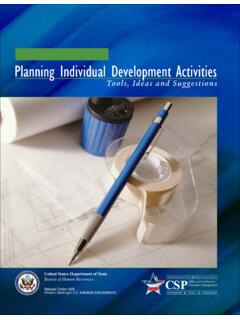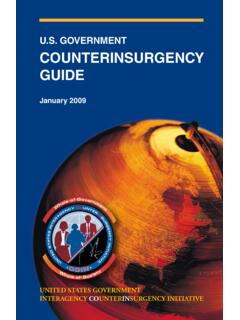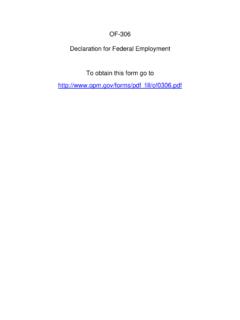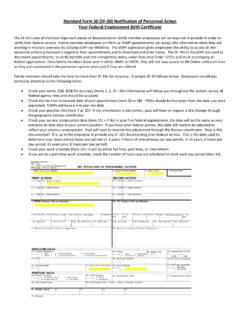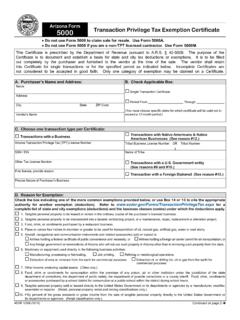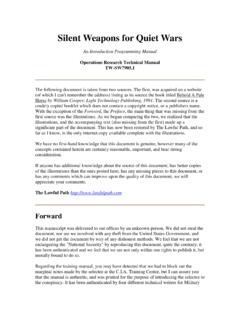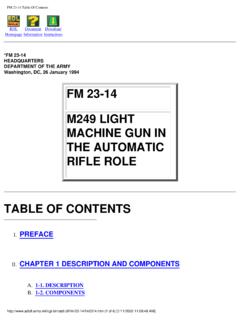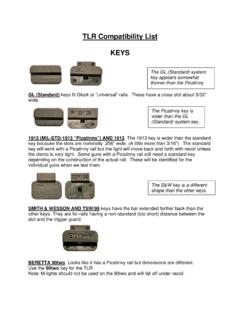Transcription of U.S. Nuclear Weapons Policy and Programs
1 Nuclear Weapons Policy and Programs Nuclear Employment Strategy Robert Scher Assistant Secretary of Defense Strategy, Plans, and Capabilities Policy 2 Nuclear Policy and Strategy The Role of Nuclear Weapons The Evolving Nuclear Arsenal Employment Guidance The Security Environment Negative Security Assurance The Role of Arms Control The Role of Nuclear Modernization Strategic Stability and Deterrence Introduction Policy The Role of Nuclear Weapons The fundamental role of Nuclear Weapons is to deter Nuclear attack on the United States and its allies and partners.
2 For states that possess Nuclear Weapons and states not in compliance with their Nuclear non-proliferation obligations, there remains a narrow range of contingencies in which Nuclear Weapons may still play a role in deterring a conventional, chemical, or biological Weapons attack against the United States or its allies and partners, as stated in the 2010 Nuclear Posture Review (NPR). The United States will only consider the use of Nuclear Weapons in extreme circumstances to defend the vital interests of the United States or its allies and partners.
3 3 Policy The Evolving Nuclear Arsenal Over the years, the United States has reduced the role, number, and types of Nuclear Weapons and continues to do so. Examples include: Role: Negative Security Assurance in the 2010 NPR Strengthening conventional capabilities to reduce the role of Nuclear Weapons in deterring non- Nuclear attacks. Number: Reduction of Nuclear stockpile by 85% relative to Cold War peak. The United States remains willing to negotiate further reductions with Russia to levels up to one-third below the New START limits.
4 Type: Reduced Nuclear warhead types from 23 in 1990 to 12 types today, with plans to further reduce to 6 types by the mid-2020s Moving to the elimination of all multi-megaton Nuclear Weapons Reduction of cruise missiles from four weapon systems to one Elimination of all intermediate-range ground-launched cruise and ballistic missiles 4 Policy Employment Guidance The President has the sole authority to order the employment of Nuclear forces. The United States maintains significant counterforce capabilities against potential adversaries.
5 We do not rely on counter-value . The United States will not intentionally target civilian populations or civilian objects. All plans must be consistent with the fundamental principles of the Law of Armed Conflict: Principle of distinction and proportionality Seek to minimize collateral damage to civilian populations and civilian objects 5 Policy Nuclear Strategy and the Security Environment The 2010 NPR established the Administration s goal to set conditions that would allow the United States to adopt a Policy of making deterrence of Nuclear attack the sole purpose of Nuclear Weapons .
6 We continually assess whether we are fulfilling the roles of Nuclear Weapons in particular the fundamental role of deterring Nuclear attack in light of the evolving security environment. 6 Policy Negative Security Assurance The United States will not use or threaten to use Nuclear Weapons against non- Nuclear Weapons states that are party to the Nuclear Non-Proliferation Treaty (NPT) and in compliance with their Nuclear non-proliferation obligations. This is intended to underscore the security benefits of adhering to and fully complying with the NPT and to persuade non- Nuclear weapon states party to the Treaty to adopt effective measures to strengthen the non-proliferation regime.
7 The United States reserves the right to make any adjustment in the assurance that may be warranted by the evolution and proliferation of biological Weapons , given the rapid pace of bio-technology development and the catastrophic potential of biological Weapons . 7 Policy Nuclear Strategy and the Role of Arms Control Arms Control has long advanced national security with the implementation of effectively verifiable and diligently enforced agreements and has shaped Nuclear employment strategy. For example, the United States has: Significantly reduced its deployed Nuclear arsenal START I, START II, and New START Restricted Nuclear deployments Nuclear -Weapon-Free Zones, such as the Antarctic Treaty, the Seabed Treaty.
8 And the Treaty of Tlatelolco Eliminated and restricted delivery systems The Intermediate-Range Nuclear Forces Treaty Limited Weapons development Signatory to the Comprehensive Nuclear -Test-Ban Treaty Implementation of a unilateral moratorium on Weapons -grade fissile material production Implementation of Life-Extension Programs (rather than developing new Nuclear warheads with new military capabilities or developing new warheads to support new military missions) 8 Policy Nuclear Strategy and the Role of Modernization Nuclear modernization is an integral component of the President s Prague Agenda.
9 The approach to modernization: Sustains a safe, secure, and effective Nuclear deterrent; Reduces the numbers and types of Weapons ; and Assures allies they do not need their own arsenals. The modernization program also affects Nuclear employment. For example: The United States developed an approach that will allow it to maintain an acceptable hedge against technical or geopolitical risk with fewer total Nuclear Weapons . 9 Policy Strategic Stability and Deterrence Strategic Stability is a condition in which major Nuclear powers recognize their inability to negate one another s strategic deterrent capabilities, either by striking first in a crisis or by rapidly expanding their arsenals.
10 Effective deterrence means convincing any potential adversary that attacking the United States or its allies would bring risks that far outweigh any expected benefits of aggression and costs of restraint. Policy is to achieve a credible deterrent, with the lowest possible number of Nuclear Weapons , consistent with our current and future security requirements and those of our allies and partners. Nuclear force capabilities and posture enable effective deterrence by: Providing the ability to implement deterrence strategy Preserving the strategy s credibility Reinforcing strategic stability 10 Policy Conclusion The fundamental role of Nuclear Weapons is to deter Nuclear attack on the United States and its allies and partners.
